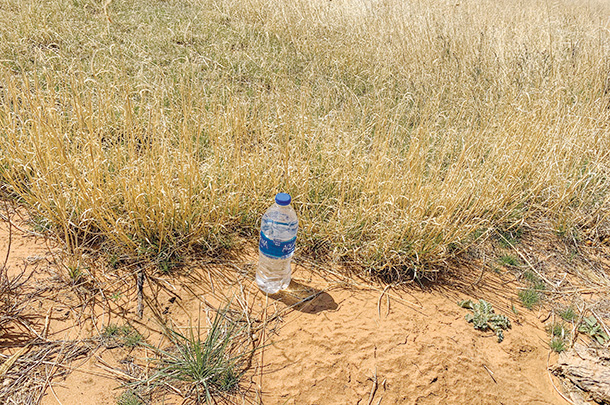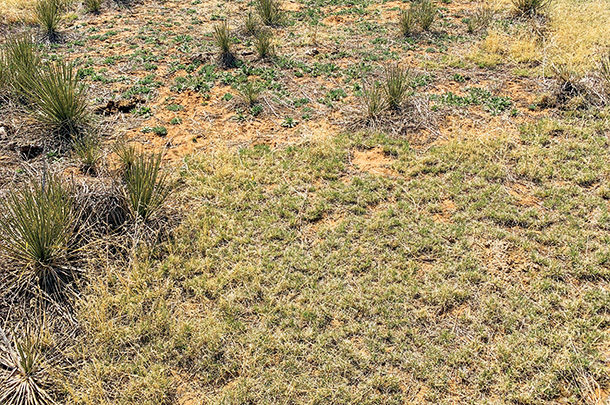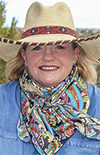We sat across the desk from the gentleman who had leased the ranch for the last five years. The owner and I were meeting with him, trying to suggest that we needed to change grazing methods to improve the range health. I, as the manager, had been unsuccessful in getting the point across. The owner and I decided to tag team the situation and see if we could get more favorable results.
When the owner casually mentioned, “Why don’t we try some rotational grazing?” the conversation took a familiar, yet uncomfortable turn. The lessee reached across the desk with a finger pointed straight in my face saying forcefully, “That won’t work here. Maybe where she went to college it works, but not here!” For the record, it has been on the north side of 30 years since I was in college, and my grazing research while a graduate student at Texas A&M University was in a vegetation type not so very different than the ranch we were discussing.
That won’t work here. If I had $10 for every time I’ve heard those four words, I would be a wealthy woman. The most entertaining part of it all is the excuses that quickly follow: “We don’t grow enough grass to do that.” “We grow too much grass.” “I don’t have that kind of time and money.” “Our outfit is too big to mess with that.” “My place is too small to do that.” “It rains too much.” “We don’t get enough rain.” Or, my personal favorite, “Old so-and-so tried that once and it didn’t work.”
Rotational grazing has many names and many adaptations:
- Adaptive management grazing
- Target grazing
- Cell system
- High intensity
- Low frequency
- Holistic grazing
- Switchback
- Merrill 4 pasture, 3 herd
Range scientists have found 100 ways to make rotational grazing complicated. For as many different iterations as you can come up with, they all have one thing in common: improve forage quantity and quality, leading to improved soil health and improved profitability. It is literally that simple. Healthy ecosystems equal profitable ranches.
This all starts with rest. I talked about this in my last article, “Rest: More important than grazing?” Rest allows plants to develop strong root systems, grow more leaves and become more resilient to drought. More forage leads to more profit from the same acres, and who doesn’t like that idea?
Throw in benefits like breaking parasite cycles – resulting in less expense treating various internal and external parasites – or only having to go to one pasture to check your animals and water instead of many. What would you do with the extra dollars and time?
How to get started
Change is hard. It is easier to keep doing things like you always have. Some of the best advice I ever heard comes from my friend Frank Price at Sterling City, Texas, who said, “Start with what you have.” Pretty simple, right? Start with what you have and build upon that over time. Do you only have two pastures? Rotate back and forth. You do not need 16 pastures, or as some advocate, “at least 40 pastures to get started.” Every time I hear a scientist get up and say that, I see people in the audience mentally checking out, dropping the idea like someone handed them a hot potato. It is an overwhelming thought. I need that much fence? Where do I put it? How do I pay for that up front? Those increased profits do take a minute to make it to the bank, and nobody wants more fence to fix.
Start where you are, so simple a concept. It’s just like taking up running; you just need to get started. Sure, there are some things to consider, such as your water supply and if it will support your cattle, but overall, you can begin by putting one foot in front of the other.
Seeing results
As you may have guessed, we have a new lessee on the ranch in my story. And we have started the mysterious, elusive rotational grazing. Not without some hiccups though.
 A colony of blue grama following rest was allowed to seed out and triple or quadruple the leaf area of the continuously grazed blue grama. Photo by Jenny Pluhar.
A colony of blue grama following rest was allowed to seed out and triple or quadruple the leaf area of the continuously grazed blue grama. Photo by Jenny Pluhar.
We are dealing with 30,000 acres (28 pastures of varying sizes and shapes). It is well-watered for continuous grazing, but we weren’t sure we had the recharge capacity to support the whole herd in one bunch on a hot summer day – or any day, for that matter. The solution to that dilemma was to replace the four 1.5-horsepower submersible pumps that powered a pipeline system with 5-horsepower pumps. Success, more water! And we exposed every weak float valve arm and chicken-hearted joint in the entire system. I had Old Faithful going one afternoon until I could shut the well off and find my better half on the other end of the ranch to help with repairs.
When we lost power last summer, we realized that although we could move cattle to other pastures with full tanks, it might benefit us to put solar up on a couple old wells previously serviced by windmills as a backup water source. That is this summer’s project. We are also replacing a couple of tanks with a design that has some built-in storage to give us a little cushion.
The good news: We are seeing results. Our first full year was last year, which was dry. I was surprised and pleasantly so. We had overgrazed patches of short grasses on soils with more clay that were eaten to the dirt, year after year. I consider myself somewhat of a plant ID expert, and I believed those patches to be buffalograss. Rest periods are showing me that I need to look closer. I cannot believe I am admitting this in print, but it is virtually all blue grama. It had not set seed in years. The leaves were maybe 1-inch long. On pastures where the blue grama set seed for the second time, I am amazed at the amount of leaf material – at least three to four times more than before. That is livestock feed, pure and simple. More of it means more cattle grazing capacity. All it needed was a little rest.
As I always say, grazing is not rocket science – it is far more complicated. That lessee who stuck his finger in my face is no longer my problem, and we are finding out that “That will work here.”









